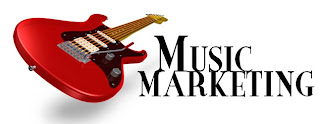Mashable recently ran an article about the "5 Big Mistakes To Avoid On Your QR Coding" that I've adapted more for the music business.
Mistake 1: Not Testing The Code. Always test the proofs of your code with a variety of smartphones and scanning apps before you release it. A code that's too small (less than an inch) will often be too dense to scan if you’ve encoded a longer URL. Using bit.ly or goo.gl to automatically generate a short URL QR code is an easy fix.
Mistake 2: Getting Too Fancy With Text. QR codes can contain text as well as links, but if your goal is to get people to a mobile web experience, you should keep the encode to a short URL. Don’t include any plain text, since many barcode scanners may not read the link. Think of the QR code as a physical hyperlink that every barcode scanner should be able to immediately “click.” If your QR code requires the user to do much more than point and scan to arrive at the intended content, you’re probably doing it wrong.
Mistake 3: Serving Up Non-Mobile Pages. If your QR code scans successfully but you’ve pointed the user to a standard desktop website, that's a mistake. 99.9% of QR codes are scanned by a mobile device, so make sure your link is mobile ready.
Mistake 4: Putting QR Codes Where There's No Data Signal. I recently had this happen at a recent NAMM show. I went into a manufacturer's very well-laid out room that had QR codes on every product. The problem was that there was no data reception in the room so the QR codes wouldn't work. That was a lot of effort for nothing for the manufacturer, and a lot of frustration for the user.
Mistake 5: Not Offering Enough Value. The proper mindset is to reward the user for scanning your QR code. There's no point in taking someone to a page that's a standard home page URL or a digital copy of your flyer. You want to link to something much more than that. The most compelling campaigns tend to offer one or more of the following:
- Exclusive rich media, videos and photos
- Exclusive or time-sensitive access
- Free downloads or swag
- “Instant Win” contests
- Special offers, coupons or gifts
- “Secret” information
- Deep integration with social media to activate viral loops
----------------------------------
You should follow me on Twitter for daily news and updates on production and the music business.Check out my Big Picture blog for daily discussion of music, recording, and production tips and tricks.





